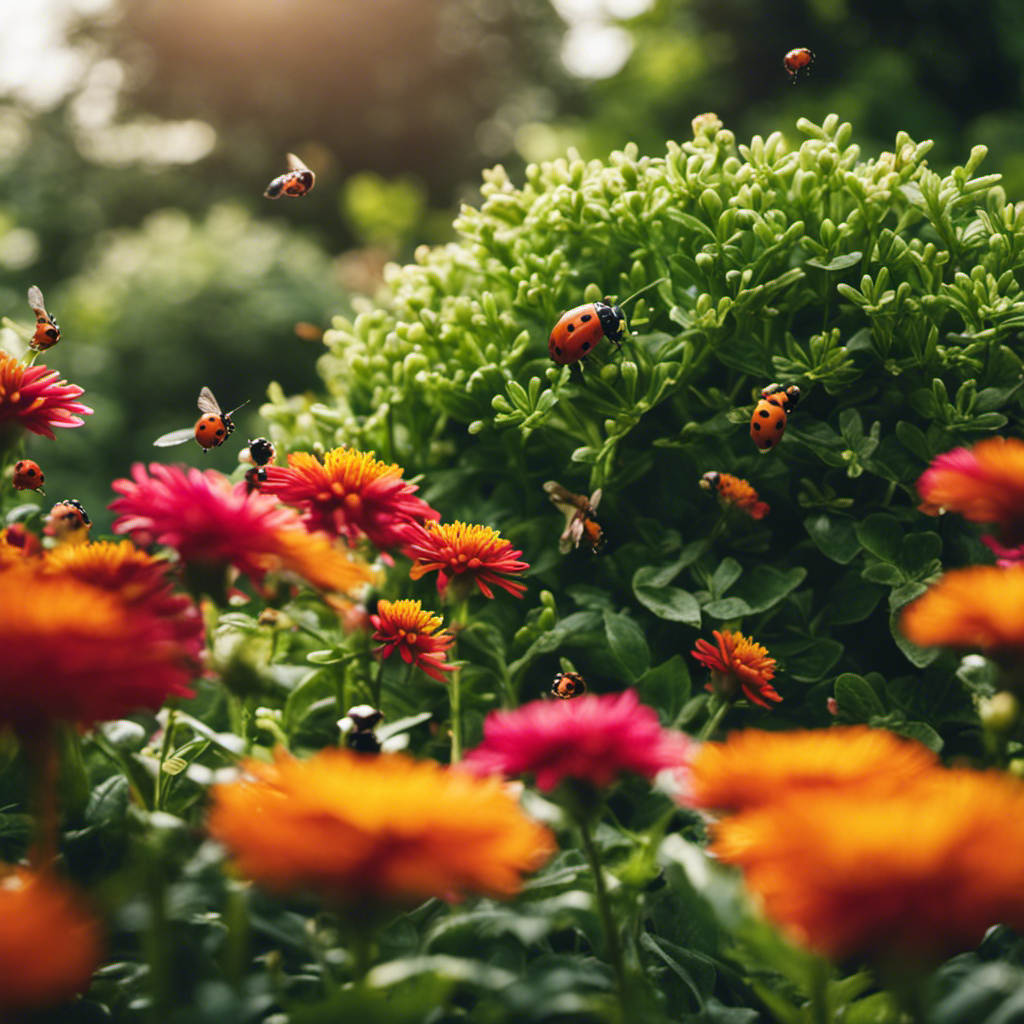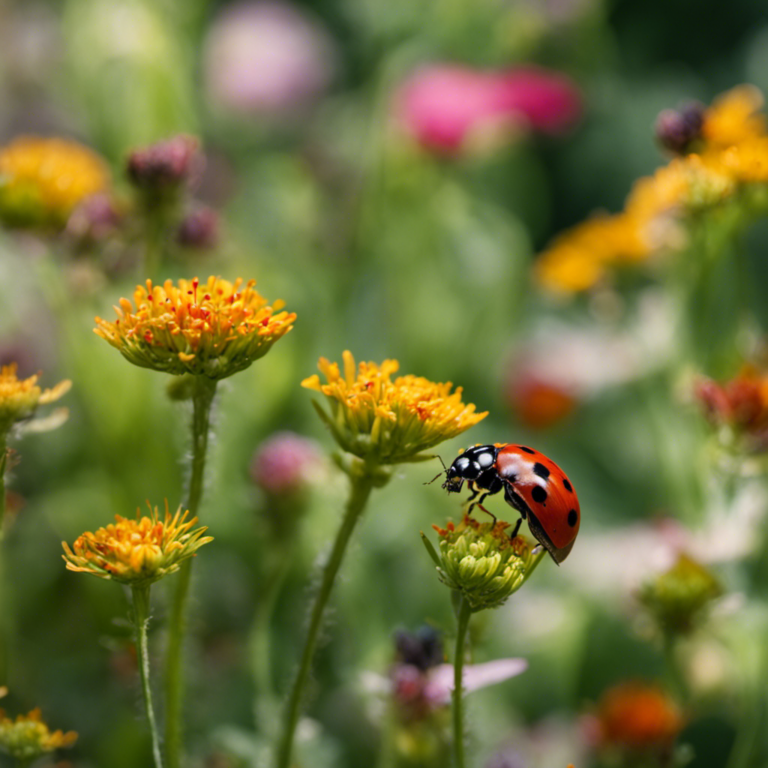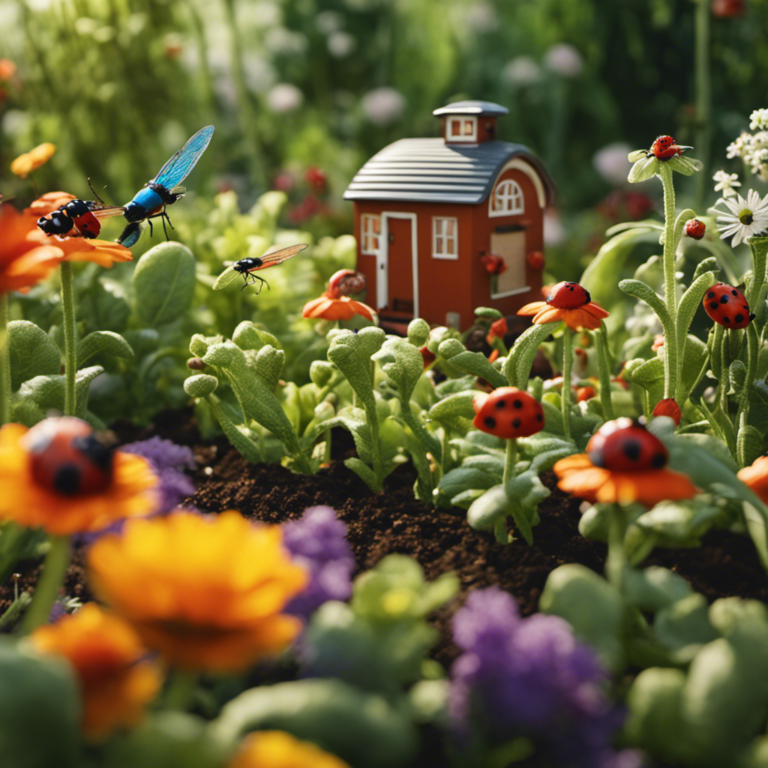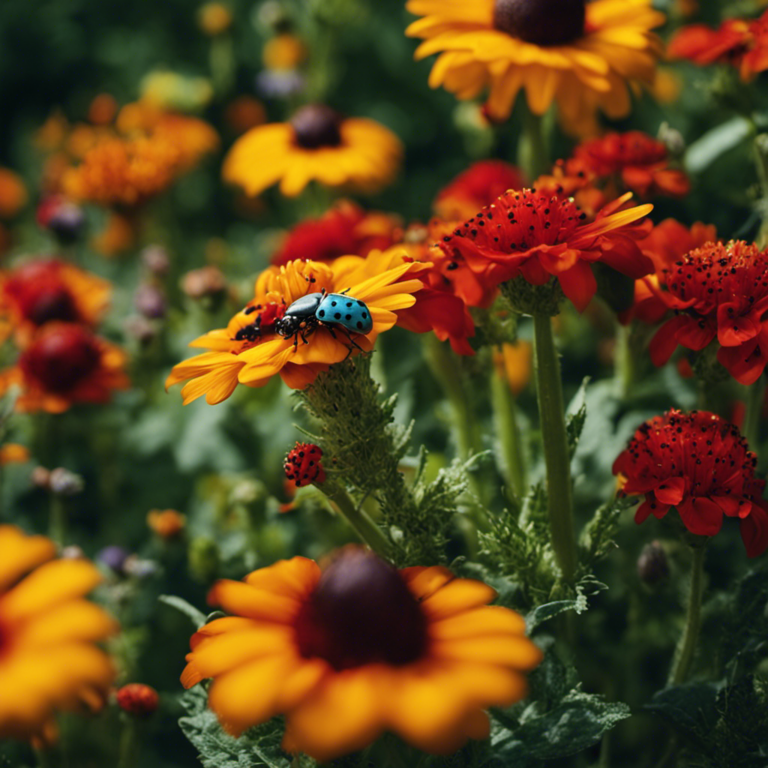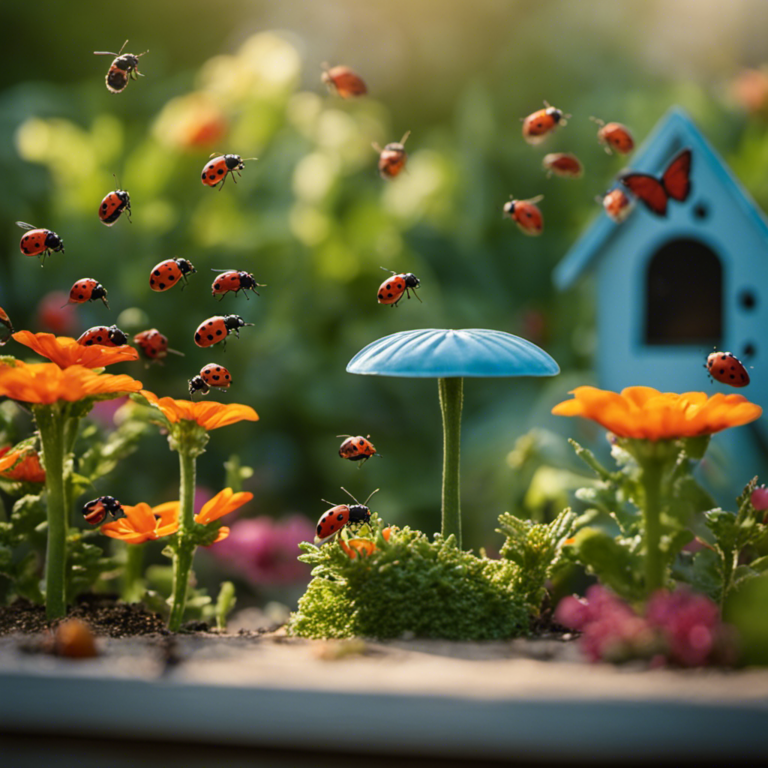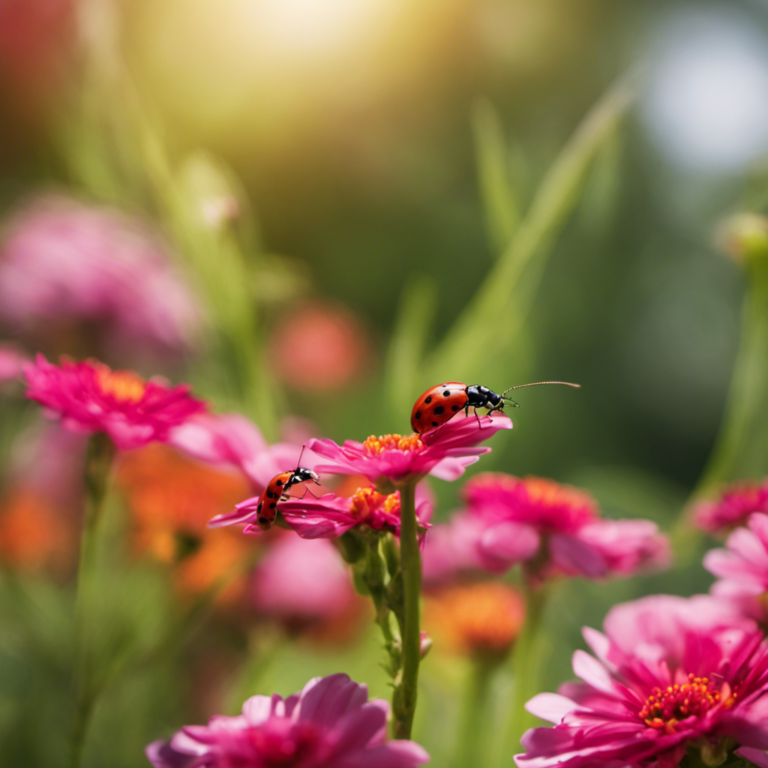Imagine a garden filled with vibrant blooms and thriving plants, a sanctuary of beauty and abundance.
But unfortunately, troublesome pests pose a threat to this picturesque scene. Fear not, for in this article, we will explore effective techniques to control pests and ensure the flourishing of your garden.
By harnessing the power of natural predators, utilizing strategic companion planting, employing organic sprays, and implementing physical barriers, we will provide you with the knowledge and tools necessary to safeguard your precious plants.
Get ready to cultivate a thriving garden, free from the troubles caused by pests.
Key Takeaways
Employing effective pest control techniques, such as using natural predators, companion planting, organic sprays, physical barriers, and crop rotation, can help you maintain a healthy and abundant garden. While these methods may require additional effort and resources, investing in a thriving garden not only provides fresh produce but also contributes to a sustainable ecosystem. With a little knowledge and practical implementation, you can enjoy a pest-free garden that flourishes year after year.
Natural Predators
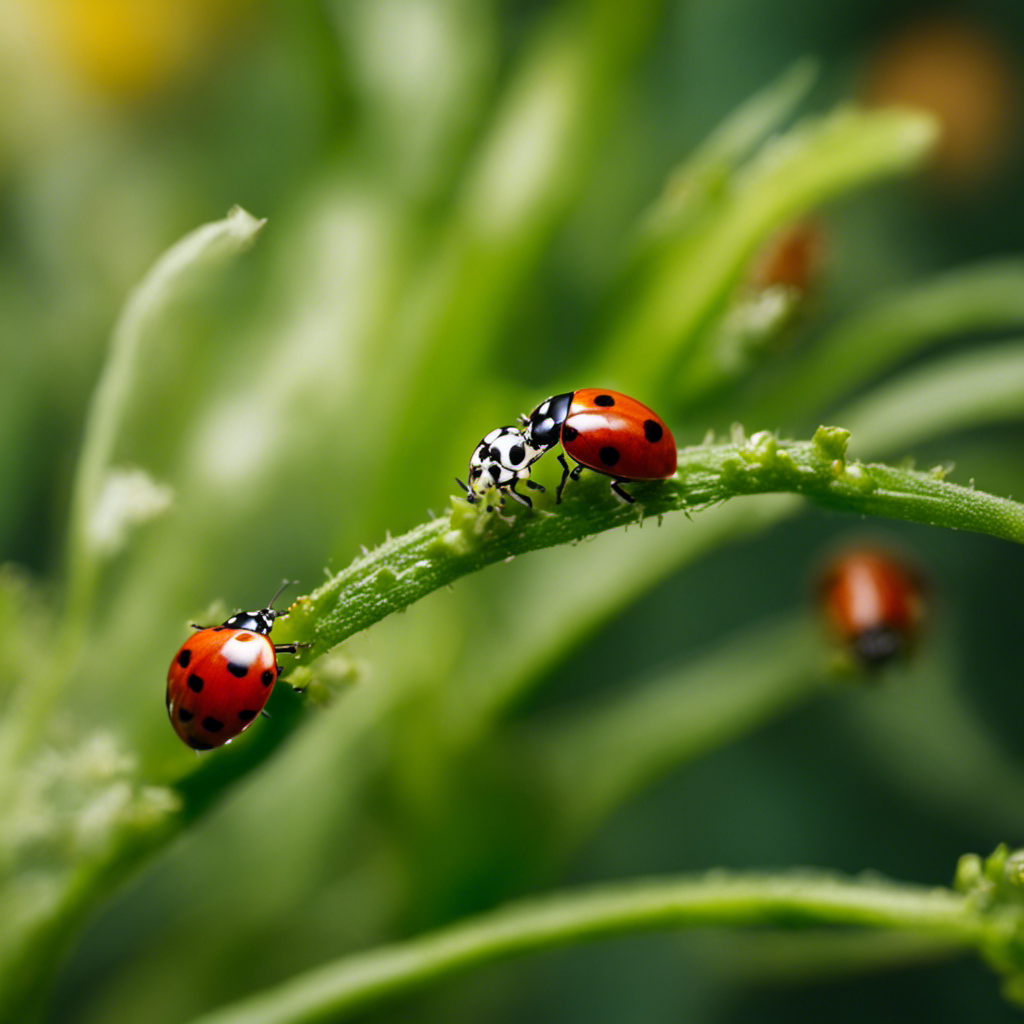
To effectively control pests in your garden, you can harness the power of natural predators. Two effective methods for keeping your garden pest-free are pest-repelling plants and biological control.
Pest-repelling plants, such as marigolds, lavender, and basil, emit scents that repel insects. By strategically planting these plants around your garden, you can naturally deter pests and protect your crops.
Another approach is biological control, which involves introducing beneficial insects or animals that feed on pests. Ladybugs, for example, are voracious predators of aphids, a common garden pest. By attracting and fostering populations of these natural predators, you can reduce the need for harmful pesticides and create a balanced ecosystem in your garden.
Embracing natural predators isn’t only environmentally friendly but also a practical and sustainable approach to pest control in your garden.
Companion Planting
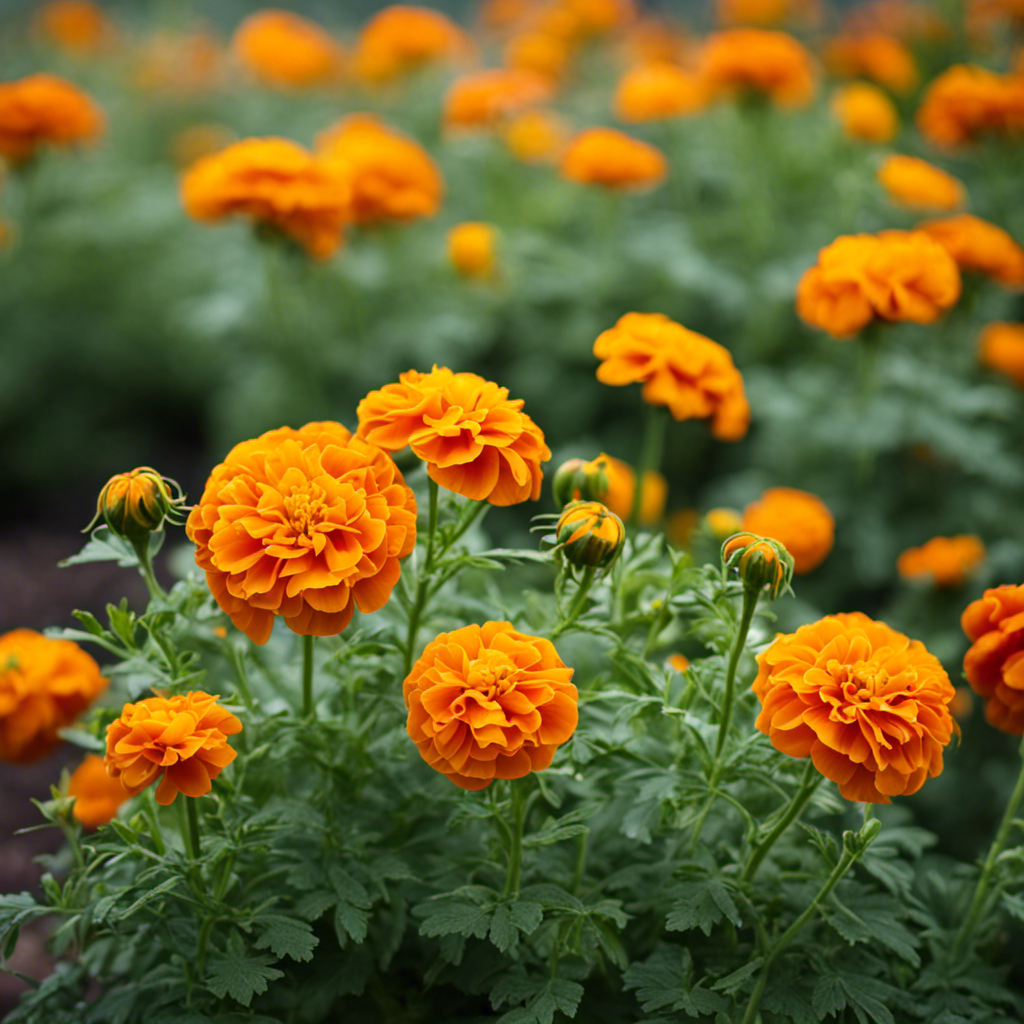
Companion Planting: An Effective Pest Control Technique for Your Garden
One great way to control pests in your garden is through companion planting. This technique involves planting different crops together that have mutually beneficial relationships. For example, some plants can provide natural pest control or enhance nutrient uptake.
Succession planting is an essential component of companion planting. By staggering the planting of different crops, you can ensure a continuous supply of food while also deterring pests. For instance, you can plant fast-growing crops like radishes or lettuce alongside slower-growing plants like tomatoes or peppers to help repel pests that are attracted to these crops.
Incorporating pest-resistant plant varieties into your garden is another effective companion planting strategy. These plant varieties have been specifically bred to naturally resist pests, which reduces the need for chemical pesticides.
By implementing these companion planting techniques, you can create a thriving garden that’s naturally resistant to pests. Not only does this approach promote a healthier ecosystem, but it also allows you to enjoy homegrown produce without the worry of harmful chemicals.
So why not give companion planting a try in your garden and reap the rewards of a pest-free harvest?
Organic Sprays
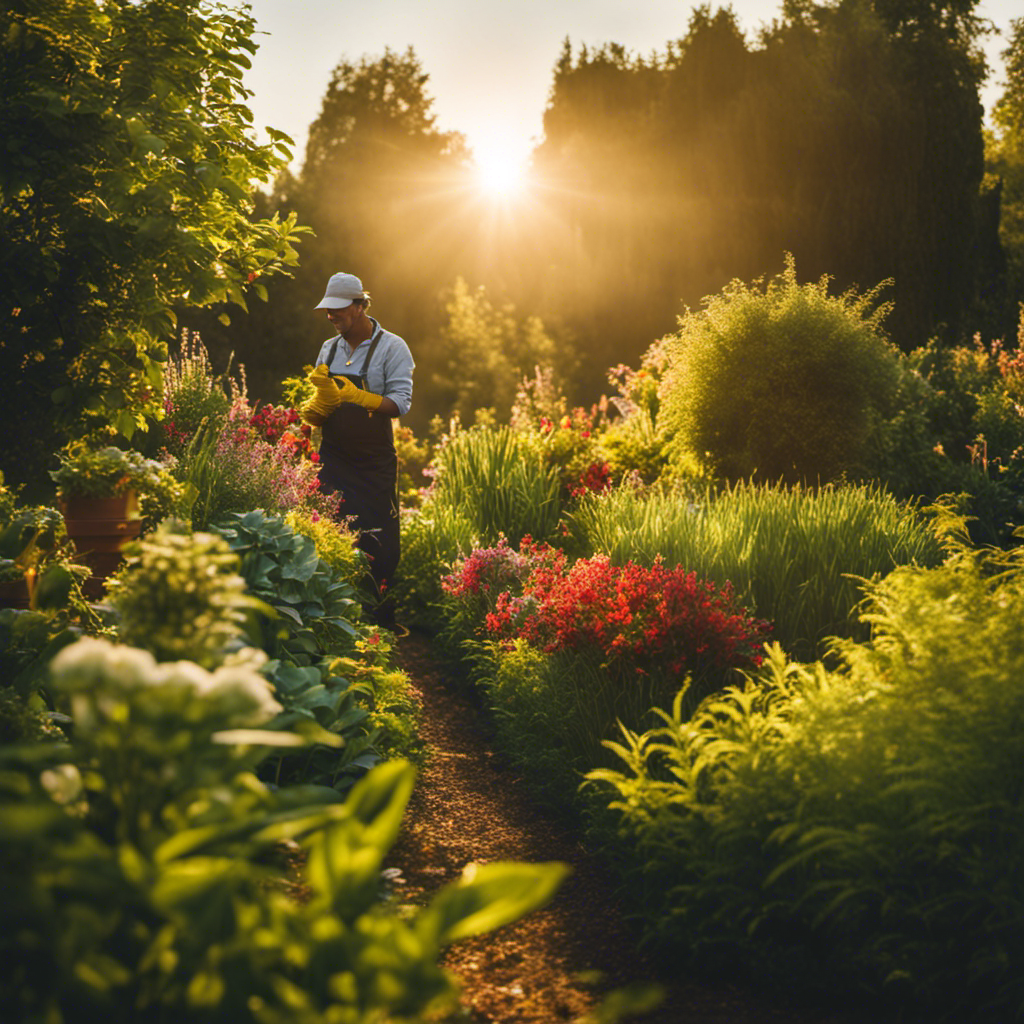
For effective pest control in your garden, consider using organic sprays. Organic sprays have numerous advantages over chemical pesticides. They’re environmentally friendly, don’t harm beneficial insects, and are safe for humans and pets. Moreover, organic sprays can be easily created at home using simple ingredients.
Here are five do-it-yourself organic spray recipes you can try:
-
Neem Oil Spray: Mix 2 tablespoons of neem oil with 1 gallon of water and a few drops of dish soap. This spray effectively repels a wide range of pests.
-
Garlic Spray: Blend 2 bulbs of garlic with 1 quart of water and strain the mixture. Add a teaspoon of dish soap and spray it on plants to deter pests.
-
Pepper Spray: Mix 2 tablespoons of hot pepper powder with 1 gallon of water and a few drops of dish soap. This spray repels insects and mammals.
-
Oil Spray: Combine 1 cup of vegetable oil with 1 tablespoon of liquid soap and 1 gallon of water. This suffocates pests such as aphids and mites.
-
Soap Spray: Mix 1 tablespoon of liquid soap with 1 quart of water and spray it on plants to eliminate soft-bodied pests.
Using these organic sprays will help protect your garden from pests while ensuring its health and safety.
Physical Barriers
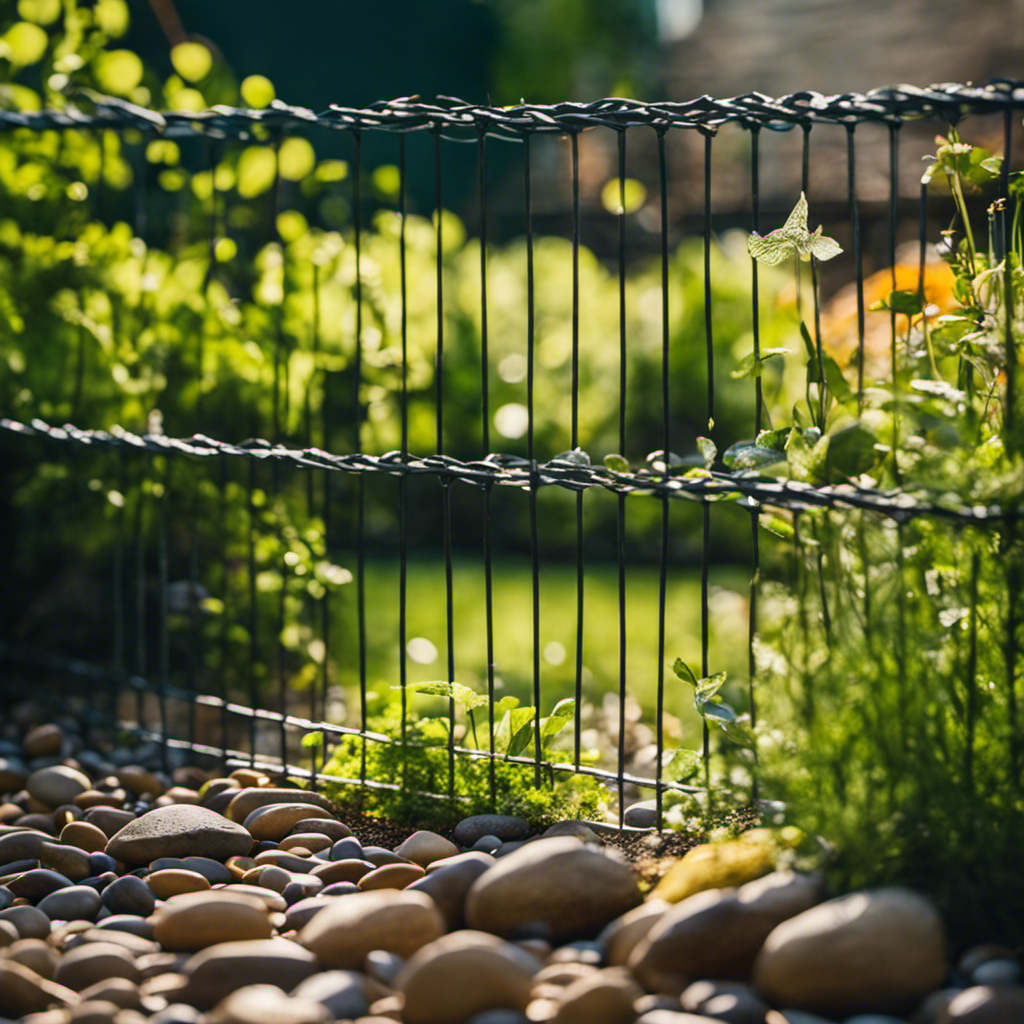
Protecting your garden from pests can be achieved through the use of physical barriers. One effective method is vertical gardening, which not only saves space but also acts as a barrier against crawling insects. By growing your plants vertically, you can minimize contact with the ground and reduce the risk of pests reaching your crops. Another approach is to incorporate pest-resistant plants as a natural defense. These plants have their own built-in defenses that repel pests, making them less likely to be attacked. By including a variety of pest-resistant plants in your garden, you can deter pests and promote the health of your plants. Additionally, you can use physical barriers such as fences, netting, and row covers to physically block pests from accessing your crops. These barriers create a physical barrier that prevents pests from reaching your plants and causing damage. Implementing these physical barriers will help ensure a thriving garden that is free from pests.
| Physical Barriers | Advantages | Considerations |
|---|---|---|
| Vertical Gardening | Saves space, acts as a barrier against crawling insects | Requires proper support structures |
| Pest-Resistant Plants | Natural defense against pests, reduces the risk of attacks | May have limited variety of plants available |
| Fences, Netting, and Row Covers | Physically block pests, prevent damage to crops | May require regular maintenance |
Crop Rotation
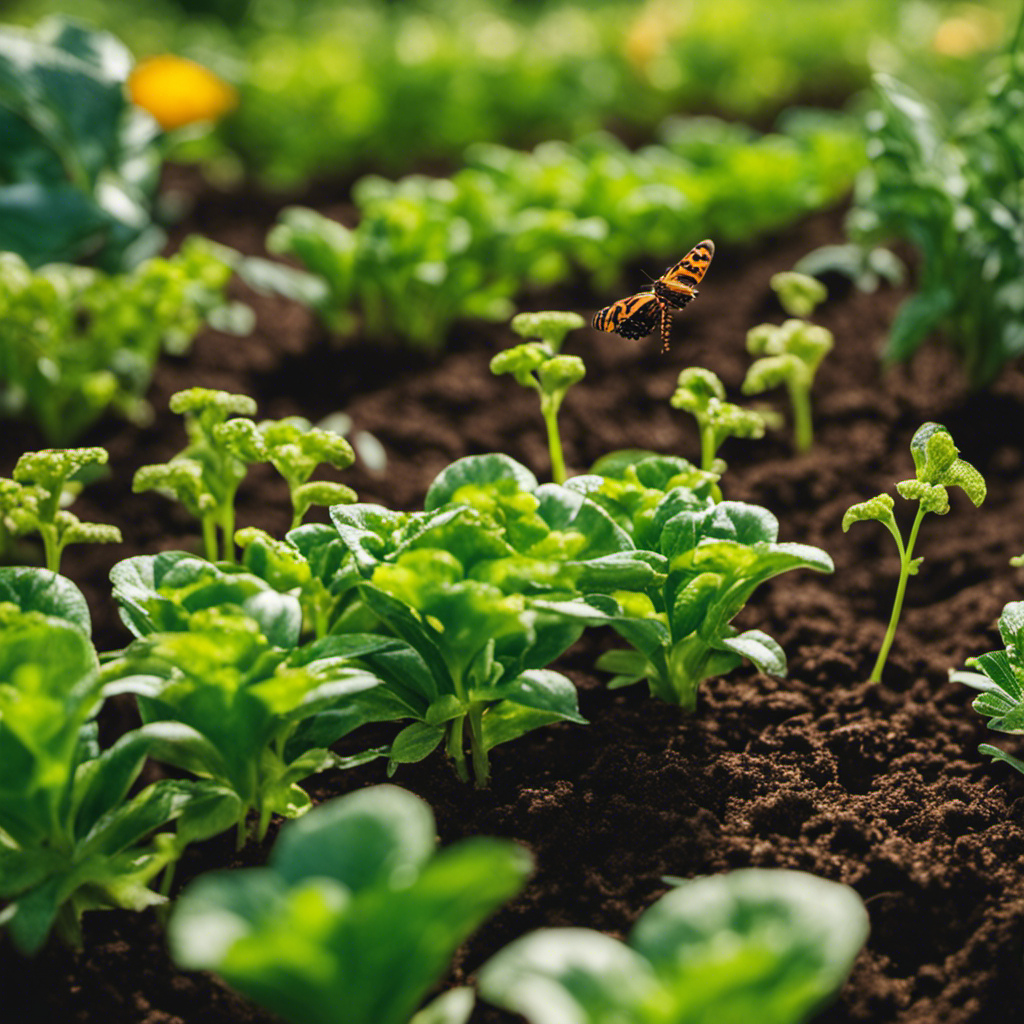
Crop rotation is an effective method for managing pests in your garden. Rather than relying on chemical pesticides, crop rotation involves planting different crops in a specific sequence to disrupt the life cycles of pests and limit their ability to establish and spread. This technique offers several benefits:
-
Reduces pest and disease pressure: By rotating crops, you can prevent the buildup of pests and diseases that target specific plant species. This helps maintain the overall health of your garden.
-
Improves soil fertility and structure: Different crops have different nutrient requirements. By rotating crops, you can ensure that the soil is replenished with the necessary nutrients, leading to improved fertility and soil structure.
-
Helps control weeds: Certain crops are known to suppress weeds. By rotating crops, you can naturally control weed growth without the need for herbicides.
-
Enhances biodiversity in the garden: Crop rotation promotes a diverse range of plants in your garden, which attracts beneficial insects and organisms. These natural allies can help control pests and improve pollination.
-
Increases overall crop yields: By implementing crop rotation, you can optimize the use of nutrients in the soil, reduce pest damage, and improve plant health. This ultimately leads to higher crop yields.
When it comes to choosing crops for rotation, consider the following options:
-
Legumes: Beans and peas are excellent choices as they’ve the ability to fix nitrogen in the soil, which benefits other plants in the rotation.
-
Brassicas: Cabbage and broccoli are effective at controlling soil-borne pests. They release compounds that deter pests and disrupt their life cycles.
-
Alliums: Onions and garlic have natural pest-repellent properties. By including them in your rotation, you can discourage pests from infesting your garden.
-
Solanaceous crops: Tomatoes and peppers are prone to soil-borne diseases. By rotating them with other crops, you can reduce the risk of disease buildup in the soil.
-
Root crops: Carrots and potatoes are beneficial for breaking up compacted soil and improving drainage. They also add organic matter to the soil, enhancing its structure.
Implementing crop rotation in your garden is a simple yet effective way to manage pests, improve soil health, and promote a thriving garden. By diversifying your crops and following a well-planned rotation schedule, you can enjoy the benefits of a balanced and sustainable garden ecosystem. As the saying goes, ‘A healthy garden starts with smart crop rotation.’
Conclusion
By employing effective pest control techniques such as using natural predators, companion planting, organic sprays, physical barriers, and crop rotation, you can ensure the health and abundance of your garden.
While some may argue that these methods require additional effort and resources, it’s important to remember that investing in a thriving garden not only provides you with fresh produce but also contributes to a sustainable ecosystem.
With a little knowledge and practical implementation, you can enjoy a pest-free garden that flourishes year after year.
